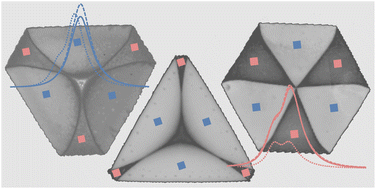Determination and investigation of defect domains in multi-shape monolayer tungsten disulfide†
Abstract
Single-layer tungsten disulfide (WS2) is among the most widely investigated two-dimensional materials. Synthesizing it over large areas would enable the exploitation of its appealing optical and electronic properties in industrial applications. However, defects of different nature, concentration and distribution profoundly affect the optical as well as the electronic properties of this crystal. Controlling the defect density distribution can be an effective way to tailor the local dielectric environment and therefore the electronic properties of the system. In this work we investigate the defects in single-layer WS2, grown in different shapes by liquid phase chemical vapor deposition, where the concentration of certain defect species can be controlled by the growth conditions. The properties of the material are surveyed by means of optical spectroscopy, photoelectron spectroscopy and Kelvin probe force microscopy. We determine the chemical nature of the defects and study their influence on the optical and electronic properties of WS2. This work contributes to the understanding of the microscopic nature of the intrinsic defects in WS2, helping the development of defect-based technologies which rely on the control and engineering of defects in dielectric 2D crystals.



 Please wait while we load your content...
Please wait while we load your content...